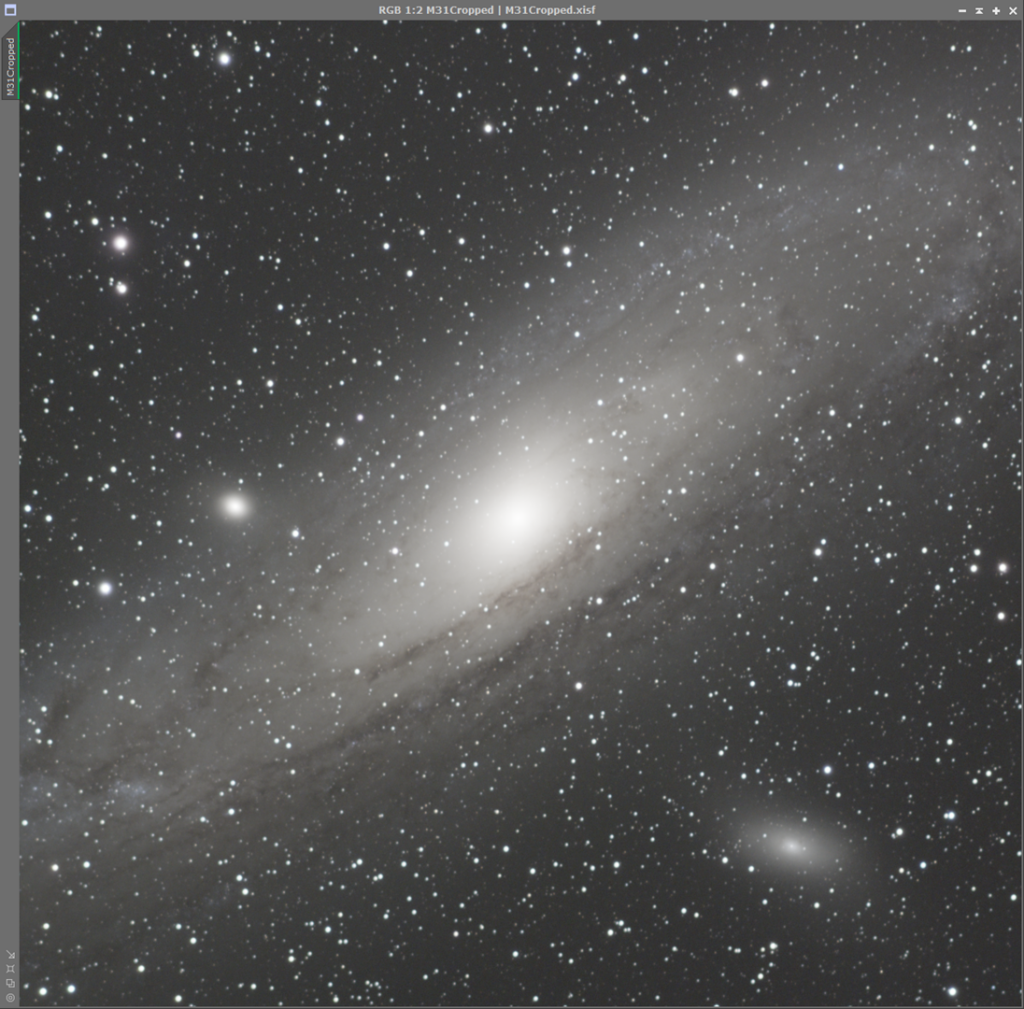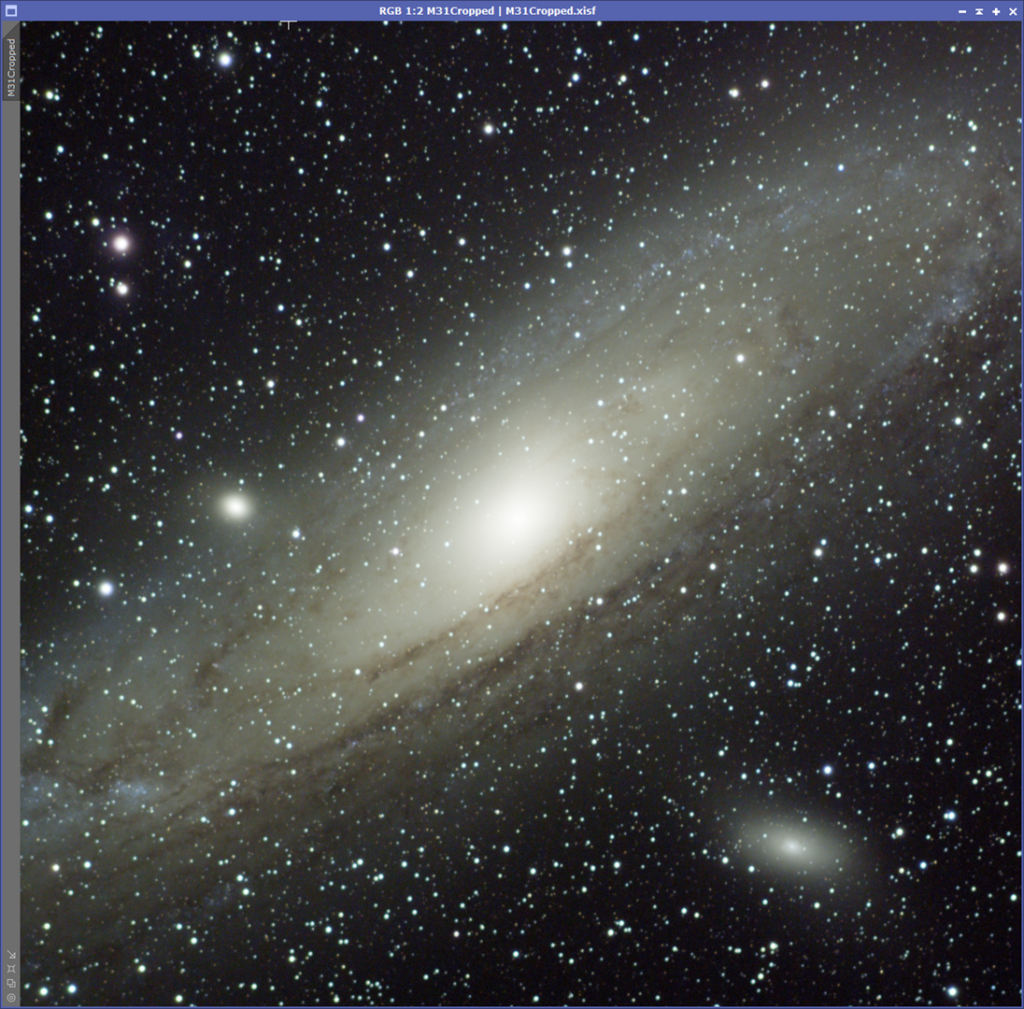Right after finishing up “my” shooting of M31 – the “Andromeda Galaxy” – with my Skywatcher 72ED and my Nikon D7500, I switched to a dedicated astro camera, a ZWO ASI 533 MC Pro. It has two big advantages over the standard DSLR:
- It can be actively cooled so I can always take my images with the same chip temperature (and re-use my darkframes)
- It does not have IR Cut Filters and therefore accepts light in wavelengths the unmodified Nikon D7500 cannot
The initial integration of the images (80 x 70s, 21 x 180s for a total of 2:36h) shows a nice result. And zooming in shows the superiority of a camera sensor cooled down to -10°C (plus I used darkframes this time): almost zero background noise!
The rest is the same basic processing workflow that I have done with the Nikon images: Color Calibration, Stretching, some Curve Transformation…done.
A direct comparison of both images – the one from the Nikon on the left, the one from the ZWO ASI 533 on the right – shows: they both work well, the Nikon’s image is an accumulated 12+ hours, the ZWO ASI 533 is an accumulated 2+ hours of exposure time.
The overall image also shows: the sensor of the ZWO ASI 533 is smaller but the items appear larger when compared to the Nikon. Photographing all of Andromeda probably requires a Mosaic of 2×1 or 2×2 frames, depending on what should be achieved.
Just out of curiosity (and stepping ahead a few month) I am also showing a comparison with a monochrome camera, a ZWO ASI 1600 MM with a Luminance filter:
Mono Cameras are a whole different thing – and I will talk about them later. But for now, let’s conclude: taking Deepsky Images with a DSLR is (for broadband targets such as galaxies) completely fine! The advantage of a dedicated color astro camera is mostly the ability to cool the sensor (and reduce the background noise reliably and reproducible) and the lack of the IR (Infrared-cut) filter on the One-Shot Color Camera (OSC).
Much more important are a good and steady mount that allows for pinpointed stars when guiding for say anywhere from 70s to 180s and a good telescope (preferable with a motor focus but more on that also later).
Suggestion from my side: put your money in the mount first! Then upgrade the optics and finally the camera. Pick your targets wisely and match them to your equipment. And don’t save money on the processing side! Like in many other cases: buy wisely! Those that buy “cheap” will either give up or buy twice…





